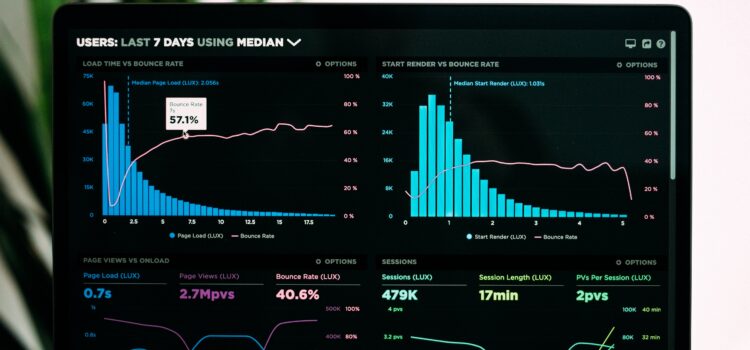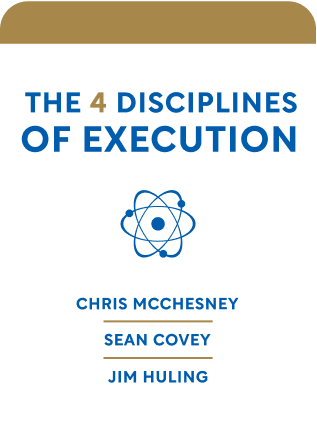

This article is an excerpt from the Shortform book guide to "The 4 Disciplines of Execution" by Chris McChesney, Sean Covey, and Jim Huling. Shortform has the world's best summaries and analyses of books you should be reading.
Like this article? Sign up for a free trial here .
What are lead and lag measures? How do they fit into the 4DX system?
Lead and lag measures come from 4DX Discipline 2, which is leverage. These measures help you progress on the big target or your wildly important goals.
Keep reading for more about lead and lag measures.
Discipline 2: Leverage With Lead and Lag Measures
Think of your WIG’s point A as a big heavy rock. No matter how hard your team pushes against it, it’s immovable. However, if your team applies a lever, the rock shifts. The team has to move the lever a lot to move the rock a little, but the rock does move. Discipline 2 is about finding the right lever to move the WIG value from point A to point B. That’s where lead and lag measures come in.
Point A and point B values are also called lag measures. Lag measures are results. Lead and lag measures go hand-in-hand. Lag tells you if you’ve reached your WIG, so they’re very important. However, as the name implies, the actions that produced these results have already happened, so there’s nothing you can do to change them. Some examples of lag measures are revenue, profit, customer satisfaction, and body weight on a scale. (The whirlwind of daily tasks is full of lag measures.)
The lever in the rock example above is a lead measure. Lead measures quantify the actions that have the most impact on the WIG. They don’t tell you if you’ve achieved the WIG. Instead, they forecast if you will achieve the WIG. They’re predictive of the lag measure and, because the actions that drive them are ongoing, they’re influenceable. For example, if your lag measure is your body weight on a scale, as above, your lead measures are what and how much you eat, and how often you exercise. Lead and lag measures relate in this way.
Because lead measures directly affect lag measures, the more you move your lead measure, the more your lag measures will move.
Most people know that the lead measures are important. The key to discipline 2 is measuring lead measures. For example, if you’re trying to lose weight, everyone knows diet and exercise are factors. However, not everyone actually measures and tracks calorie intake or time spent exercising.
There are two critical characteristics of lead measures:
- Predictive. A change in the lead measure must create a change in the lag measure.
- For example, consider a lag measure that’s how often your car breaks down. A predictive lead measure would be how often you have it serviced. A non-predictive lead measure would be what color you paint it.
- Influenceable. Specifically, directly influenceable; your team must be able to influence this measure without dependence on another team or outside force.
- For example, consider the lag measure that’s how many crops you grow. An influenceable lead measure would be how often the crops are fertilized. A non-influenceable measure would be the amount of rainfall—there’s nothing anyone can do about it.
Why Leaders Fail to Focus on Lead
Lead and lag measures aren’t equal for 4DX. Fixating on lag measures doesn’t get results (because the lag measures are the results), leaders focus on them for two reasons:
- It’s easier to get data on lag measures than lead ones. There are almost always already systems in place to measure lag measures; sometimes you have to come up with a new system to get lead. It takes discipline to keep getting data.
- For example, it’s easy to step on a scale and weigh yourself (lag measure), but it’s a lot more work to keep track of how many calories you eat or how many minutes you spend exercising (both lead measures)
- Lag measures are the results you have to achieve and the results you’re held accountable for. It’s not surprising that people focus on the numbers that measure success and failure.
Even when leaders shift their focus away from lag measures, they may still struggle with lead measures. Why? It’s rarely a matter of ignorance or effort—most leaders have some idea of what factors will influence their results. Leaders struggle with lead measures because:
- They aren’t employing Discipline 1. Even if they know what the lead measures are, they’re not focusing on them because they’re dealing with too many goals, or they’re stuck in the whirlwind.
- They know what the lead measures are but they don’t know if anyone’s actually doing them because they’re not tracking.
- For example, suggestive selling is hardly a new idea in retail, but salespeople have to actually do it, regularly, for it to work.
Implementing lead measures is the hardest part of 4DX because:
- They’re counterintuitive. Lag measures are the obvious place to focus, because the results are what matter.
- They’re hard to measure. Tracking behaviors (especially new ones that have never been done before) is harder than tracking results. On the bright side, it’s so much work to get data on lead measures that if you were tempted to disobey Discipline 1, you’ll self-enforce once you realize the time commitment required for measuring even a single WIG’s lead measures.
- They come with a false sense of simplicity. They require focus on a single behavior that might not seem relevant, especially to those outside the team.

———End of Preview———
Like what you just read? Read the rest of the world's best book summary and analysis of Chris McChesney, Sean Covey, and Jim Huling's "The 4 Disciplines of Execution" at Shortform .
Here's what you'll find in our full The 4 Disciplines of Execution summary :
- The 4 disciplines that can make any strategy a successful reality
- Why a great plan falls apart when you don't think adequately about execution
- The 6 steps you need to scale the 4DX model across an entire organization





